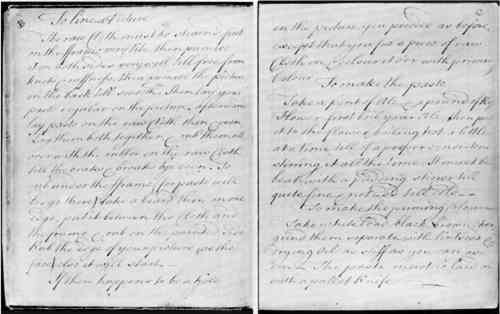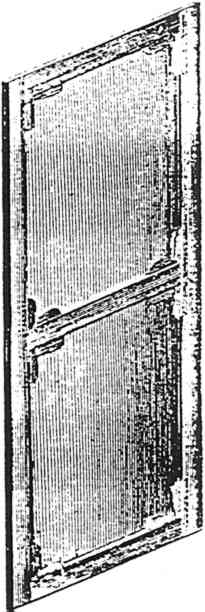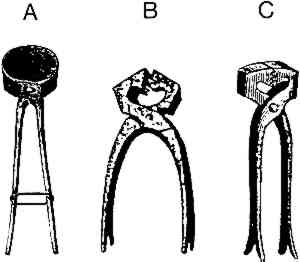AN 18TH-CENTURY ARTIST-APPLIED LINING: JOSEPH WRIGHT OF DERBY'S CUT THROUGH THE ROCK AT CROMFORDIAN S. HODKINSON, & DEBORAH M. CHILD
4 INTERPRETATION OF TECHNICAL OBSERVATIONSPreliminary observations that the Cromford painting was lined and on a keyed stretcher led to the immediate assumption that the lining was a later intervention. Further exhaustive scrutiny has shown that assumption to be wrong. The evidence is undeniable that the painting presently visible was lined before its completion and has not been altered structurally since. The lining is therefore of the late 18th century and must have been done either by someone for Joseph Wright or by Wright himself. That Wright did it himself is quite feasible. He would have witnessed restoration practices between 1751 and 1753 when he was apprenticed to Thomas Hudson (1701–79) at a time when Hudson was still providing this service (Miles 1979). In Wright's Account Book (Wright [18th c.]) there are notations about his restoration work. For example:
Furthermore, in a section of the Account Book headed To Line a Picture, the instructions describe exactly the method and materials used on the Cromford painting (fig. 11).
A sample of the “priming colour” taken from the filling used to compensate a loss in a restored area on the canvas was tested by Analytic Services, Canadian Conservation Institute. It was found to be composed primarily of calcium carbonate and lead white mixed with a minor amount of clay and iron oxide in a linseed oil medium. Therefore, it differs somewhat from Wright's recipe in that it contains calcium carbonate as well as lead white, “earth colors,” and The method Wright describes calls for the lining canvas to be tacked to the stretcher before attaching the painting. After the lining canvas is stretched, the paste is applied to it and to the back of the painting. Then the two adhesive-coated surfaces are brought into contact. A second set of tacks is then used to attach the painting to the stretcher. To experiment with the procedure, the authors lined a fragment of an old painting used in the laboratory for experimental purposes. The process was fast, easy, and worked remarkably well, although, as with any aqueous adhesive system, it would be very dangerous on canvases prone to shrinkage on contact with water. As instructed, the lining canvas was tightly stretched. A keyed and beveled stretcher was employed. Thereafter, both sides were sand-papered, as was the back of the painting, now detached from its stretcher in preparation for receiving the paste. The composition of the paste is interesting. The infrared spectra of the lining adhesive from the painting and of the experimental paste were almost identical (Moffat and Miller 1991). Jones (1991a) speculates that ale was chosen for its preservative properties. This choice seems unlikely, as the paste made in the lab grew mold after three days. A more plausible explanation is that ale gives tack, and presumably the sugars present have a long-term humectant effect. For the experiment the paste was made using ale obtained from a small private brew house (Kingston Brewing Company, Clarence Street, Kingston, Canada) that uses methods similar to those employed in the 18th century with no preservatives or other additives. Quantities were converted to metric; 568 ml of boiling ale were added to 454 g of the flour in a pudding basin and beaten with a wooden spoon. Wright's instruction, “till of a proper consistence” was difficult to interpret, but clearly one pint of ale was not enough to slake the thirst of one pound of flour. Perhaps the modern rye flour was too finely ground. To make a spreadable paste, another 200 ml of ale had to be added. The resulting paste was of a consistency similar to that used for traditional pasta linings. It also gave a clue to the meaning of “lay your paste regular on the surface.” It was applied in a thin, even layer with a spatula. Applying it first to the back of the painting had the effect of allowing time for moisture to penetrate the paint layers and plasticize them before applying pressure. As expected, the lining canvas tightened when the paste was applied. Since the lining canvas used in the experiment was machine-woven, it probably tightened more than the hand-woven lining canvas used on the Cromford painting. It was assumed that the “rubber” Wright used to apply pressure was some kind of padded fabric ball. A makeshift one was made by wrapping a wad of cotton batting in a piece of cloth. It was perhaps a little soft to press out the paste and distribute it evenly between the adhering surfaces. A somewhat harder material would have served better. The technique of using “a board thinned on one edge to press under the frame” also worked comparatively well and demonstrated the need for a well-beveled stretcher. Rubbing on the painted surface as per Wright's instructions could also account for the damages present on the Cromford at the top left edge. During the rubbing procedure the whole system became slacker on the stretcher, but after drying it tightened up acceptably, presumably because of paste shrinkage. All in all, the procedure was easy, efficient, and amazingly effective. Having established that the process described by Wright could yield a result identical to that on the Cromford painting, other questions then Contemporary English sources give little detailed information on the subject, but Diderot's Encyclopedia (1751–80) is helpful. In the section on the craft of the painter are illustrated examples of stretchers, including a ch�sis � clefs(fig. 12) (vol. 29, pl. 4, fig. 2 and pl. 5, fig. 5).4 In the section on carpentry (vol. 28, pls. 1,2) are illustrated several corner joints similar to, though not exactly the same as, the Wright stretcher. Wright's use of such a stretcher thus is not out of the question, and indeed Jones illustrates a stretcher of this type although she does not specify the exact type of corner joint (Jones 1991a).
The evidence of stretching pliers is more surprising. They are not mentioned in Wright's Account Book instructions, and Gettens and Stout (1966, 284–86) state that “this tool is mentioned in catalogs of 1899 and times since then. It is not noticed earlier or referred to in earlier literature on painting practice.” According to Carlyle, the records of the art supply company Roberson's of London introduced “straining pincers,” subsequently called “canvas pliers,” beginning in 1884 (Carlyle 1991, 257–69). However, evidence that such pliers existed even earlier and were used in Wright's time is contained in Diderot, although not in the context of the painter. In volume 12 there are at least 12 entries under the heading of “Pinces,” and there are several illustrations of such devices designed for various purposes (fig. 13). The most likely craft from which the artist would
|


